Brothers killed in action together
- Home
- World War I Articles
- Brothers killed in action together
There are numerous examples of families where three brothers may have been killed in the war – but there are far fewer instances where all three brothers may have died in the same action on the same day.
An article on the WFA website in September 2020, drawing from information gleaned from the WFA’s work on Pension Cards, highlighted the case of the three Pannell brothers from Sussex, all killed on 30 June 1916, suggesting that this might be a unique occurrence.
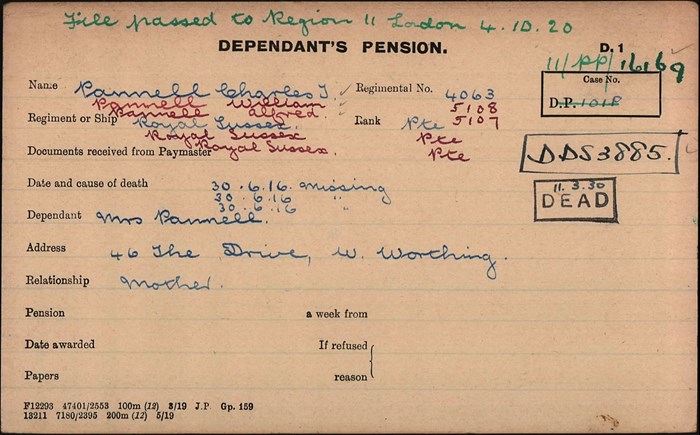
Above: the Pension Card which initially highlighted the loss of three Pannell brothers on the same day.
But over the last few months, it has become apparent that such instances of such tragic family loss on one day are far from unique. This article seeks to bring together all currently known instances – but as ever, this may not yet be exhaustive.
The earliest example found thus far is that of the Racheil brothers, killed on 24 May 1915– Arthur (born 1894), Frank (born 1897) and Frederick (born 1891). In 1911, the family lived in East Ham, London.
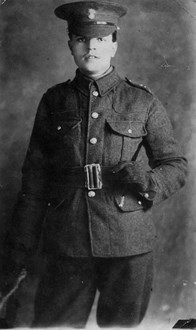
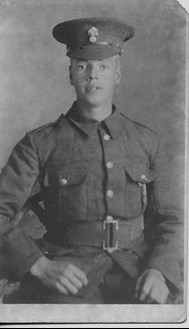

Above: the three Racheil brothers – although it is not possible to positively identify each picture. Photos - Ancestry Public Tree
Arthur, Frank and Frederick all served in the 3rd Battalion of the Royal Fusiliers. On 24 May 1915, the battalion was in trenches near Hooge. That day marked the start of the Battle of Bellewaerde, with the Germans attacking with poison gas, heavy artillery and infantry.
Included in the Battalion’s War Diary is a report from Major Baker, the sole surviving officer, which stated: 'From 8a.m. onwards I was the only (officer) survivor. Out of a total of 880 rank and file some 70 men were collected in a gassed condition in the rear of the line and some 150 men remained ultimately with me. The remainder were killed, wounded or missing".
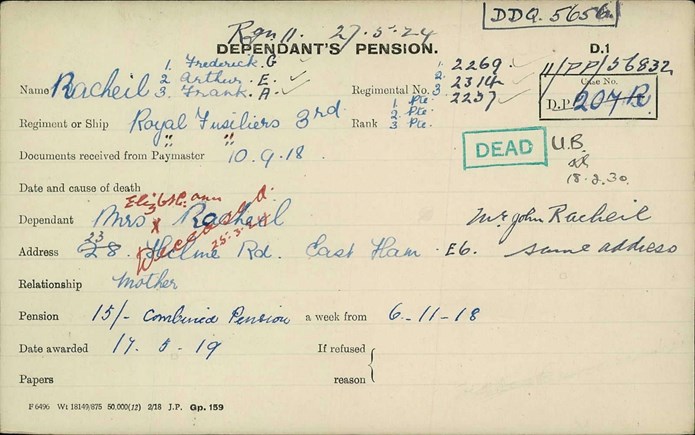
Above: the Pension Card showing all three Racheil brothers killed on 24 May 1915.
The graves of Arthur, Frank and Frederick were not located after the war and they are all commemorated on the Menin Gate Memorial.

Above: The Menin Gate Memorial. Photo - VisitFlanders
Just three months later- on 12 August 1915 - there would be another example of the loss of three brothers in the same action, but this time in Gallipoli.
Edward, Frederick and William Urry came from Newport on the Isle of Wight, the sons of George and Emily Urry. All were serving in the 1/8 Hampshire Rifles (the Isle of Wight Rifles).
On 10 August 1915, the 1/8 Hampshires landed at Suvla Bay to attack the Turkish positions at Anafurta Ridge as part of the 163rd Brigade. Lt. General Stopford delayed the attack until 12 August 1915, thus giving the Turks notice – when the attack came, the Turks were ready with machine guns and the British suffered severe losses, with the Isle of Wight Rifles losing almost 90 men.
(This was also the attack in which the 5th battalion of the Norfolk Regiment from Sandringham ‘disappeared’ -but that is another story!).
The eldest of the Urry brothers was Edward George, born in 1880. A blacksmith, he had married in 1906 and had 5 children. Both William Henry (born in 1890), employed as a general labourer, and Frederick Albert (born in 1893), employed as a carriage painter, were unmarried.
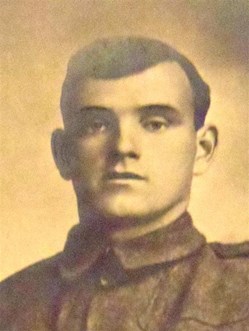
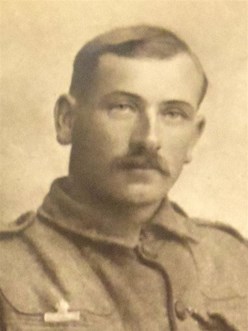

Above: from left to right, William, Edward and Frederick Urry. Photos – Ancestry Public tree

Above: the Pension Card for Edward George Urry.
In addition to the loss of their three sons, Edward’s wife, Florence also suffered the loss of William Richardson, her brother, on the same day and in the same action.

Above: William Richardson. Photo - IWM
All three Urry brothers and William Richardson are commemorated on the Helles Memorial in Gallipoli.
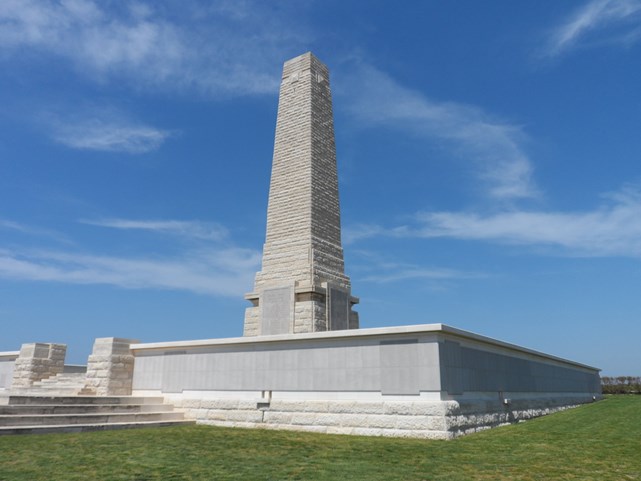
Above: The Helles Memorial, Gallipoli. Photo - CWGC
Just a few weeks later, the Mochrie family from Kilbirnie in Ayrshire would suffer the loss of three brothers – James, Robert and Matthew were all killed at Loos on 25 September 1915. A fourth brother, Andrew, would be killed later in the war on 9 June 1917.
Unlike the earlier instances where the brothers were serving in the same regiment, the three Mochrie brothers were in different regiments – James was in 2nd Gordon Highlanders; Robert was in 6th Royal Scots Fusiliers; and Matthew was in 9th Cameronians (Scottish Rifles).
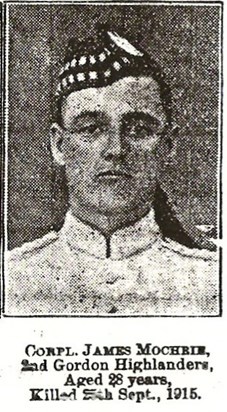
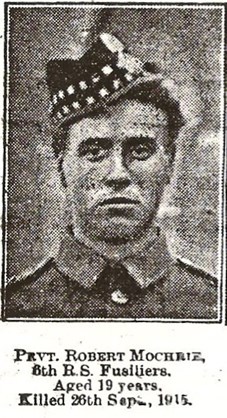

Above: James, Robert and Matthew Mochrie. Photos – Ancestry Public Tree
All were killed on the opening day of the Battle of Loos. None has a known grave and they are therefore commemorated on the Loos Memorial.
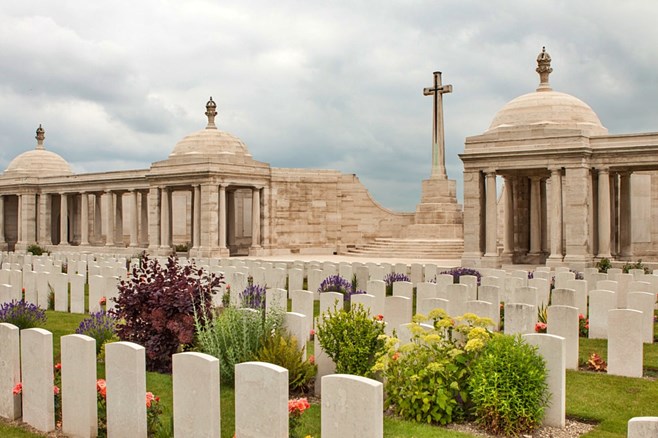
Above: the Loos Memorial. Photo – ww1cemeteries.com
The Royal Navy provides the next instance of the loss of three brothers in the same action. On 31 May 1916, three Malcolm brothers – Charles, Joseph and John - were serving as stokers on HMS Queen Mary.
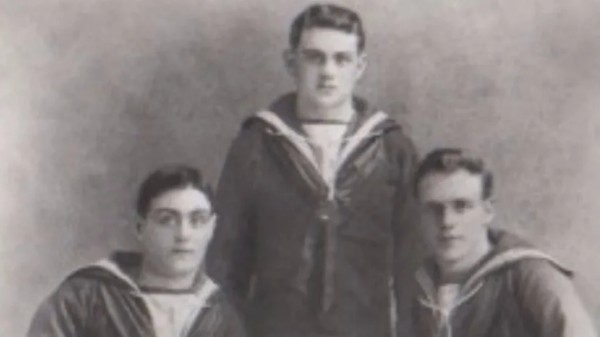
Above: the three Malcolm brothers killed on 31 May 1916.

Above: HMS Queen Mary sinking
The Queen Mary was hit twice early in the battle and sank quickly after her magazines exploded. Of the crew of 1,289 there were only 20 survivors.
Given the cost in human lives of the Battle of Somme from 1 July 1916 until November 1916, it is not surprising that further examples of three sons lost on the same day can be found.
Three brothers, Ernest, Fred and Charles Walker, were serving in the Barnsley Pals battalions of the York and Lancashire Regiment: Ernest in the 13th battalion (1st Barnsley Pals), and Fred and Charles in the 14th (2nd Barnsley Pals). Both battalions took part in the attack at Serre on 1 July 1916, suffering heavy losses.
Their parents, John and Emma Walker, had both died before the war. The eldest of the brothers was Fred (born 1881), who had married Alice Maud Cartwright in 1902 and had three children.


Above: Private Fred Walker (Photo – Barnsley Archives and Local Studies) and his Pension Card.
The youngest of the three brothers was Charles (born 1885). He had married Beatrice Beckett in 1913 and had three children.
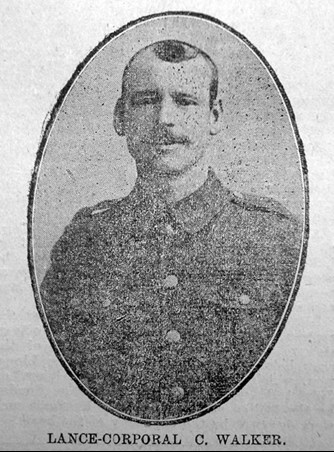

Above: Lance Corporal Charles Walker (Photo – Barnsley Archives and Local Studies) and his Pension Card
Whilst Charles and Fred were identified as killed in action within a short time after the attack on Serre, the fate of the third brother, Ernest Alfred, was not established until some weeks later. Ernest (born 1883) had married Harriet Ann Eames in 1915.
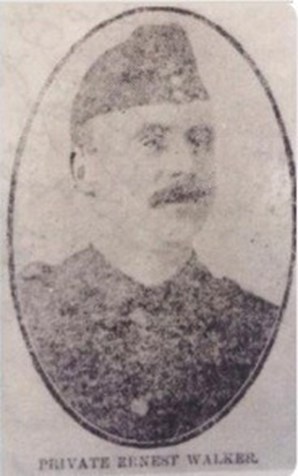

Above: Private Ernest Walker (Photo – Barnsley Archives and Local Studies) and his Pension Card
Charles is the only brother to have a named grave. He is buried in Euston Road Cemetery, Colincamps, whilst Fred and Ernest are commemorated on the Thiepval Memorial. The losses sustained by the Barnsley Pals battalions that day are commemorated on a memorial, close to where many of them fell.
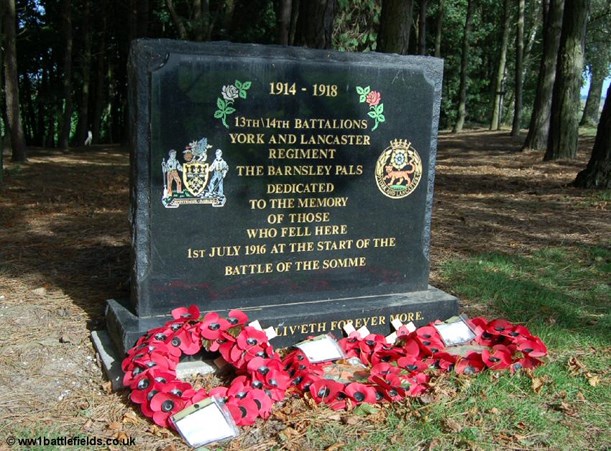
Above: the memorial to the Barnsley Pals . Photo – ww1battlefields
A further instance of three brothers killed in the same action during the Battle of the Somme involves an Australian family – the Potter brothers. Four brothers, the sons of Benjamin and Eliza Potter, served in the same battalion – initially the 12th and from March 1916,the 52nd – with three killed in action on 3/4 September 1916 at Mouquet Farm. They had consecutive service numbers, although Ralph Victor Potter had enlisted in July 1915 whilst his three brothers, Hurtle Francis Constable, Thomas James Albert and Edward Wilfred enlisted in September 1915. The brothers came from the small hamlet of Yongala in South Australia and are commemorated on a memorial there.

Above: The Yongalaand District Memorial to those killed in the war. Photo - GWF
The 52nd Battalion’s first major action after its arrival in France was at Mouquet Farm on the Somme on 3 September 1916, when it suffered the loss of almost 50% of its strength.
Initially, it was Edward Wilfred who was first reported as killed in action on that day. Sometime later, Ralph (the only surviving brother) would come across Edward’s remains as he reported to the Australian Red Cross Information Bureau:
“I found letters and proof of his identification in his gas helmet alongside of his decomposed body at Moquet [sic] Farm on 25 March 1917. The bodies were being gathered at that time. No doubt his remains would be reburied”

Above: Edward Wilfred Potter – killed in action on 3 September 1916. Photo - Chronicle
By early October 1916, Mrs Potter was informed that Thomas James was reported as missing, whilst nothing was known about Hurtle Francis or Ralph Victor and “in the absence of any official report, it may be assumed that they are with their Unit”. However, inquiries carried out by the Red Cross ascertained that both Thomas James and Hurtle Francis had indeed been killed in the action on 3/4 September 1916.
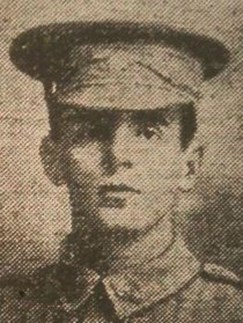

Above: Thomas James Potter and Hurtle Francis Potter. Photos– Observer, Adelaide
Ralph survived the war, although he was later wounded at the end of March 1917 and invalided to England before returning to Australia. His application for early discharge from the AIF which can be seen in his service record makes reference to the loss of his three brothers in what he calls ‘the stunt at Mocquet [sic] Farm” and its effect on his parents – “it has broken them up”.
Hurtle Francis’s grave was later concentrated to Courcelette British Cemetery. Edward Wilfred and Thomas James are both commemorated on the Villers-Bretonneux Memorial in France.
Later in the Somme campaign, another family would also suffer the loss of three sons on the same day – in this case, on 12 October 1916 – although not actually in the same action. All were the sons of Thomas Parker and Sarah McGee, from the village of Stuntney, near Ely. The youngest was Bertie (born 1898). He served in the 7th Suffolk Regiment, alongside his brother James (born 1895) in the 12th Division and was in the Flers area when they were both killed on 12 October 1916. Thomas (born 1893) served in the 1st Cambridgeshire Regiment, part of the 39th Division, and was involved in action at Schwaben Redoubt when he was wounded and died in a Casualty Clearing Station on 12 October 1916.

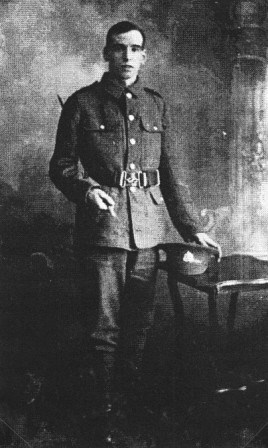

Above: from left to right, Bertie, James and Thomas McGee. Photo –stuntneyvillage.org
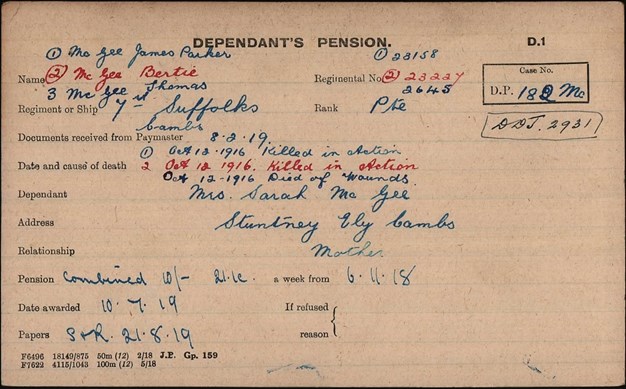
Above: the Pension Card showing the death of the three brothers on the same date.
A fourth brother, Edward (born 1892) would die of wounds on 9 August 1917.
The final currently known instance of three brothers killed in the same action involves another Australian family – the Seabrook family. All three brothers, the sons of William and Fanny Seabrook, George (born 1892), Theo (born 1893) and William (born 1896) had enlisted in August/September 1916 and served together in the 17th Battalion of the AIF. Prior to enlistment, George Ross Seabrook was a master painter whilst Theo Leslie was a fireman at the loco works in Eveleigh and William Keith was a telephonist.
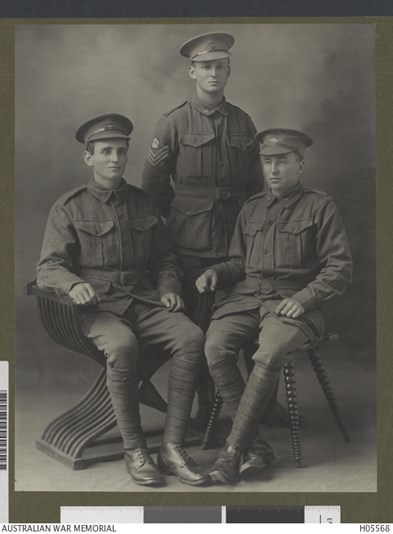
Above: the three Seabrook brothers, left to right Theo Leslie, William Keith and George Ross. Photo – AWM
On 20 September 1917, the brothers were on their way up to the front line at night under heavy German artillery fire.
There has been suggestion that all three brothers were killed by the same shell however, it seems more likely that Theo and George died together, whilst their brother William Keith, an officer in another Company, was severely wounded at a different time that day and died only a few hours later in a Casualty Clearing Station, although there are conflicting reports in the Australian Red Cross Inquiry files.
William Keith Seabrook is the only one of the three brothers to have a named grave in Lijssenthoek Military Cemetery, with a date of death recorded by CWGC of 21 September 1917. From Service Record details, it appears that both Theo and George were buried in the vicinity of Westhoek and Anzac Ridge but their graves could not be located after the war. Consequently, they are commemorated on the Menin Gate Memorial.
Their parents received a pension of 25/- per fortnight granted from 3/1/18 in respect of Theo in addition to 15/- and £1 per fortnight for their two other sons.
There may well be further cases of such tragic family loss yet to be uncovered….part of the fascination that we in The Western Front Association all have for WW1 means that new information continues to come to light even after more than 100 years! Please get in touch if you are aware of any such instances.
Article by Jill Stewart
Hon. Sec. The Western Front Association
Further reading:





